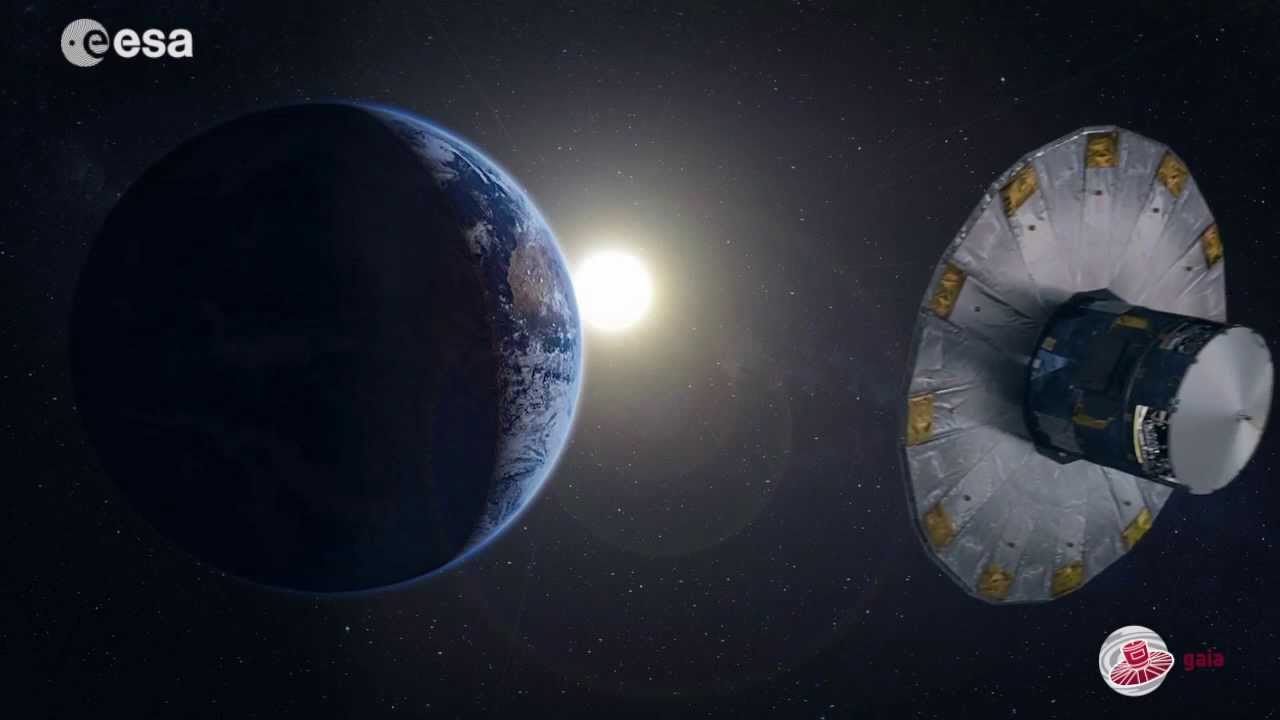 Gaia orbital telescope as an artist
Gaia orbital telescope as an artistThe sun is the star that gives life to all life on earth. Thanks to our luminary on the planet is warm, there is liquid water and atmosphere. So far, the Sun is the only star in the system, but the situation may change in the future. The fact is that in 1.3 million years we will have a guest - the
second star , only slightly inferior in size and mass to the Sun. Astronomers say that the likelihood of this event is very high.
This object is well studied by astronomers, its catalog identifier is
HD 168442 (Gliese 710). The star is not as massive as the Sun, but not much less than it - the mass of the Gliese 710 is 60% of the solar. It moves along a trajectory that in almost a half million years
will lead it to us. We can immediately say that there should be no global catastrophe, although the likelihood of any disasters is still there.
The study of this object for a long time conducted by scientists of the European Space Agency (ESA), more precisely, the team
of the Gaia orbital telescope . It was launched into orbit on December 19, 2013. The main task of the telescope is to make a detailed map of the distribution of stars in our Galaxy. In addition to predicting a meeting with Gliese 710, scientists, using the tools of Gaia, made a graph of the approach of the Solar system with other stars. True, none of them will have such contact as the mentioned object will be in the time closest to cosmic standards.
What will happen to the solar system? Nothing special. The fact is that Gliese will not pass through the center of our system, the star will be, so to speak, on the outskirts, somewhere in the
Oort Cloud . This region itself is a spherical region of the solar system, which is the source of long-period comets. Instrumental existence of the Oort cloud is not confirmed, but many indirect facts indicate its existence. In fact, scientists have no doubt that the "cloud" really surrounds the solar system.
So, you cannot reach the star that comes to visit us - it will be about 90 light days at the time of the minimum approach. However, since Gliese 710 is a star, and quite bright, the object can be seen in the sky. At night it will be three times brighter than Mars, the star’s visibility should be excellent.
The star itself cannot do anything bad
for the Earth or other planets. But, probably, it will greatly change the trajectory of objects in the Oort Cloud, so hundreds or even thousands of comets, large and small, can rush into the inner regions of the Solar System. Accordingly, the probability of large and small objects falling onto the surface of our planet will increase significantly.
Of course, humanity still has plenty of time to prepare for this moment (which can be dangerous only if humanity itself still exists in one form or another and does not leave the Solar System or is not destroyed).
In general, the work of Gaia, as mentioned above, is the observation of the stars. At the moment, the telescope has helped to determine, calculate the various characteristics of millions of stars, including their magnitude, direction of motion, brightness, and so on. The orbital telescope observes only the stars of the Milky Way. Scientists, using observational data, made a forecast of 300,000 stars. The forecast is valid for the next 5 million years. As it turned out, 97 of the observed objects will pass in the future (at different times, but within the specified time interval) at a distance of about 93 trillion kilometers (and less) from the Sun. So not only Gliese 710 will be a guest of our system.
Experts estimate that 16 stars will approach the Sun in the next few million years less than 235 trillion kilometers. According to astronomers, this is the distance at which the Sun’s neighbors can already influence the Solar system, even if it is minimal. Of course, all this is averaged data, since the real influence of neighbors can be assessed more or less accurately, only by knowing their mass and diameter. After refining the characteristics of stars, scientists will be able to make a more accurate forecast.
In principle, a visit to the solar system by another star will not be the first time. So, about 70,000 years ago, a dwarf star passed through the Oort Cloud. Then volcanoes began to work actively on our planet, although it is not quite clear now whether this star was the cause of all these eruptions or not. Some experts believe that the mass extinctions of terrestrial plants and animals were provoked by the “guest stars”. But for now this is only an assumption that needs to be confirmed or disproved.